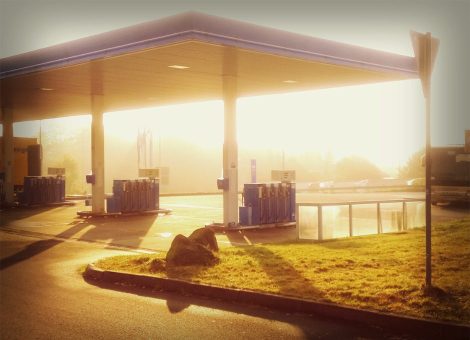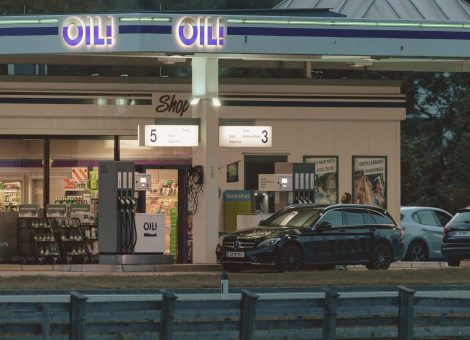Meet the Kalibrate team: Carlos Palma, Vice President of Account Management

At Kalibrate, we believe our success is driven as much by our people as our technology. So, as part of our meet the team series, we’re showcasing some of the talent and expertise within the Kalibrate family. This installment features Carlos Palma, Vice President of Account Management.
What’s your role at Kalibrate?
My role is Vice President of Account Management, focusing on our retail fuel and convenience store clients.
From initial discovery to implementation, I ensure that our client’s business objectives are matched with both a solution and forecast models which provide them with the value they expect from Kalibrate.
What does a typical day look like?
Most of my time is spent overseeing ongoing projects, solution usage and client satisfaction. Staying up to date with retail fuel market trends and how our clients’ businesses are performing is key to being able to provide direction through our best-in-class solutions and services.
Consultancy guidance using my retail fuel experience coupled with Kalibrate’s bespoke services allows me to engage with our clients to bring additional value to our partnership, notably when dealing with ever-changing and increasingly challenging market conditions.
What do you love about your role?
When I first started working at Kalibrate, the retail fuel industry was very different than today. Back then, oil companies owned and operated a much larger percentage of retail fuel sites, which allowed them to make decisions that directly benefitted their own network and the products and services provided to their customers.
Over the next three decades, many oil companies shifted their focus to upstream and began divesting from their retail assets. During these years of retail operations transformation, I have been fortunate to have worked with fuel retailers in over 50 countries, helping them face the challenges from this changing landscape, understand and mitigate the impact from new and stronger competitors, improve their market position through optimal decision making and achieve their business goals as a result.
Why did you choose to join Kalibrate?
Straight out of college in Rio de Janeiro, I found in Kalibrate an opportunity to work for a company with international reach and exciting science-based solutions that offered me the chance to utilize my language skills and work with clients all over Latin America. Although back then our clients extracted enormous value from Kalibrate’s location strength metrics, there was no technology available yet to display mapping visualizations in computer-based solutions. After moving to our Tulsa, Oklahoma office five years later, I really enjoyed helping deploy and deliver our next generation of planning solutions incorporating interactive mapping layers, aerial views, more accessible data and leading-edge performance forecast models.
What do you think are the greatest challenges and opportunities in the fuel sector?
The current environment of flat or declining fuel demand seems likely to continue given the growth of zero emission vehicles and more fuel-efficient cars in general. Given the synergy of fuel and inside sales, store sales are likely to be significantly impacted by this flat or declining fuel demand.
Given these pressures on the fuel and convenience industry in general, it is safe to assume that the mergers, acquisitions, and consolidations that have characterized the 21st century fuel and convenience store industry will continue with equal or increased vigor. One may expect to see the continuing growth of very large format stores like Buc-ee’s or Wally’s and expect the stretching tentacles of the best-in-class large format fuel and convenience retailers to continue well beyond their current footprints.
Network planning in this environment requires diligence from fuel retailers on the following points:
- Applying the best available technology for evaluating the strength or weakness of the existing sites in their network
- Applying the same degree of sophistication to new site acquisition whether the new site is a ground up, new to industry location or an acquisition
- Operating stores and organizations to extreme efficiency; applying best in class technology throughout
- Devoting resources and energy to improving communication throughout the organization from the very top to the individual store employee
Where do you see the fuel industry heading?
Expect mergers, acquisitions, and consolidations to continue in the coming years. In certain geographies, the regulatory environment may lead to restrictions on ICE vehicles in some localities. This will certainly have an impact on the viability of fuel and convenience stores in those areas. But the complete disappearance of fossil fuel-based fuel and convenience stores is something only the largest of enterprises need to plan for at this point.
Meeting the challenges of the immediate future and beyond will depend on staying ahead of your competition by applying state of the art technology and best in practice business acumen across your organization and portfolio of stores.
Read more articles about:
Location intelligenceSubscribe and get the latest updates
You may unsubscribe from our mailing list at any time. To understand how and why we process your data, please see our Privacy & Cookies Policy
Meet the Kalibrate Team
Fuel pricing
The Kalibrate news round-up: June 2025
In this monthly feature, we look across the industry and mainstream news to uncover stories of note that we think are...

Fuel pricing
Rethinking fuel pricing strategy as sales decline
In today’s fuel retail environment, declining sales volumes are the new normal. While some individual markets are...


